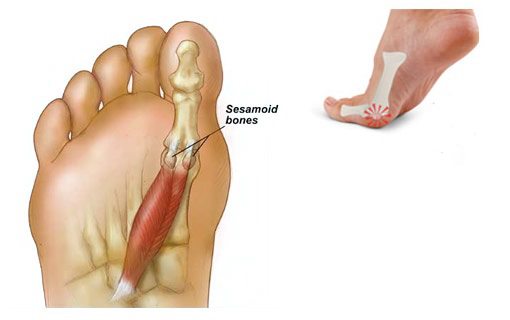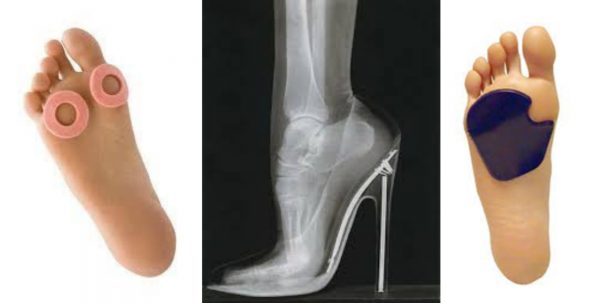
Could You Have Sesamoiditis?
Painful 1st Toe Joint Explained
by Sally Harrison from Pro-Align & Strength4Dance
So what happened in clinic this week?
Over the last couple of weeks, I’ve seen an increase in the number of dancers with pain under the 1st toe joint. As with many areas of the body there can be a multitude of reasons as to why we get pain in the 1st toe joint and what structures are giving symptoms (skin, tendons, capsule, ligaments, the joint surface itself). For the girls I recently saw in clinic it was pain coming from the sesamoids under the 1st toe and the tendons associated with them.
We can often see this this injury when getting close to exam season, end of year shows and videos showcase filming time. Training load has ramped up and the amount of time dancing and repeating repertoire has increased. This is a common time to get many non-traumatic injuries happening (not due to a singular event) as the load becomes too much for the tissues to manage, and we see tissue injury and pain.
Let’s talk sesamoids …
What is a sesamoid? A sesamoid bone is a small bone (named after a sesame seed) that is inside a tendon, where the tendon passes over a joint. They act like pulleys, assisting in smooth movement and allowing the tendon to produce better force. In the first toe, the sesamoids also serve as a weightbearing surface for the first metatarsal bone (the long bone connected to the big toe), absorbing the weight placed on the ball of the foot when walking, running and jumping.
The biggest sesamoid we have is the patella (knee cap), with smaller versions being found in the wrist, fingers and under the 1st toe of the foot. The sesamoids of the foot sit within medial and lateral tendon of FHB (flexor hallucis brevis).
Sesamoiditis is inflammation of the tissues around the sesamoids. In some cases there may even be a fracture of these small bones.
Signs & Symptoms
As this injury is often due to overload, we may not feel a singular event that hurts the joint. It creeps up on us over time.
What is a typical presentation;
- Pain under the first toe joint. (1st met head)
- Pain is normally felt with rising and the push off phase of gait (walking).
- We can also feel pain when pressing on the area or with resisted flexion of the toe in a more extended start position.
- We may see signs of inflammation such as redness, heat or swelling.
Why?
When we feel symptoms, we need to always be thinking ‘why has this tissue been put under load that it can’t cope with? Why has it moved beyond its threshold and is now unhappy and causing me to feel pain?’
The main culprit will be timing and positioning of the foot not only in gait, but also with our position with rises or when dancing or walking in heels.
The foots ability to pronate and supinate effectively is essential when referring to the speed and timing of when the 1st met head connects with the floor. A heavy connection and too much pressure will ultimately annoy the tendons and lead to inflammation and pain.
What can we consider?
- Timing of pronation – how quickly does the 1st met head contact the ground after heel strike?
- Does the foot have a varus forefoot angle which can feed into this change in timing?
- Does the foot have poor timing with heel strike and so contact heavily with the 1st met head again?
- Is the 1st ray more plantar flexed and less able to open in sagittal plane (forward and back ) when the foot is loaded in stance phase?
- Does the foot properly supinate in the push of phase of gait or is it left in a type 2pronation pattern where it rolls over the inside of the 1st toe joint?
- Is the foot ‘fished’ in demi point putting more pressure on the 1st joint?
- Is the foot in type 2 pronation (fishing) when wearing high heels?
- Are the intrinsic muscles of the foot weak and non-supportive?
- Are the extrinsic or outer muscles of the foot being overworked? (toe scrunching)
Now all of the above can sound very technical and overwhelming, so it is advisable to work with a clinician to get a proper assessment of gait and foot function in motion. They can then guide your treatment and graded return to dancing.
For my clients in clinic;
Dancer #1 did ballet and Irish and had a chronic history of toe scrunching, poor intrinsic strength, and was working into end range toe extension in her Irish shoes.
Dancer #2 did ballet and was fishing in her rises and also with her walking pattern. This was also connected to her hyper mobile knees.
Treatment
Treatment will consist of reducing pain, removing the extra load, allowing healing, retraining the foot in motion and then strengthening this pattern.
- Rest – time away from the aggravating activity. Limit demi point, don’t wear high heels, minimise jumping, especially barefoot.
- Pain relief – try a topical anti-inflammatory or even use ice as pain relief.
- Offload the area to allow for time to heal – use tape to avoid excessive toe extension or use a met head raise, corn pad or specific toe pad with space for the 1st
- Strengthen the foot – wake up the intrinsic muscles of the foot with exercises like doming, short foot and working on tendu technique with long toes alignment.
- Retrain proper motion – whether this is with something complex like the gait cycle or more simply in position of demi point.

This video shows a basic foot check in that we can do daily or before class. What is your foot doing? Does your pronation and supination feel the same? Where is the position of your demi?
Foot check in https://youtu.be/5upfkPMG6Ew
Doming is just one of the many exercises I have on the strength4dance channel to release and train the feet. Doming can be viewed as a foot ‘work out’ to wake up and strengthen the intrinsic muscles of the foot. The doming shape is more relevant to the foot in Tendu than it is in gait, but it is a valuable exercise to assist in neural firing within the foot.
Doming https://youtu.be/agwlaoTmQag
Rises with poor technique can easily lead to excess pressure on the sesamoids of the 1st toe joint. This video gives you some handy tips for looking at rise technique and getting proper supination and not a type 2 pronation (fishing)
All things rises https://youtu.be/Gfo346rRCEs
Sally xx
Pro-align; physiotherapy for dancers








